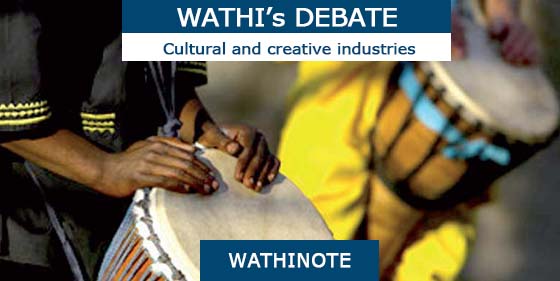

Author: World Intellectual Property Organization (WIPO)
Type of publication: Background Brief
Date of publication: 2016
Introduction
Traditional craftsmanship requires specialized and traditional techniques, skills and knowledge that are often of considerable antiquity and transmitted from generation to generation. Handicrafts can be traditional cultural expressions (TCEs) in their design, appearance and style, and can also embody traditional knowledge (TK) in the form of the skills and know-how used to produce them.
TK and TCEs, including handicrafts, are valuable cultural, social and historical assets of the communities who maintain, practice and develop them; they are also economic assets that can be used, traded or licensed for income generation and economic development. Unfortunately, however, traditional techniques – and the design, reputation and style associated with handicrafts – are vulnerable to imitation and misappropriation. All too often cheap imitations undermine sales of traditional handicrafts as well as the quality reputation of the genuine products.
Proposals and solutions are being identified for the legal protection of TK and TCEs to prevent their misuse, misappropriation, or other kind of illicit exploitation. These can also be useful for the protection of traditional handicrafts. Negotiations on a sui generis international legal instrument for the protection of TK and TCEs are currently taking place in the WIPO Intergovernmental Committee on Intellectual Property and Genetic Resources, Traditional Knowledge and Folklore (IGC). These negotiations aim to address the linkages between the intellectual property (IP) system and the concerns of TK and TCE holders. A number of countries and regions have also developed their own sui generis systems for protecting TK and TCEs.
What Are “Handicrafts”?
Handicrafts are sometimes referred to as artisanal products, craft products, traditional creative crafts or works of artistic or traditional craftsmanship. There is no universally agreed definition of handicrafts, but the following common characteristics can be identified:
- they are produced by artisans, completely by hand or with the help of hand-tools or even using machinery, provided the artisan’s direct manual contribution remains the most substantial component of the finished product;
- they are representations or expressions that are symbolic of the artisan’s culture;
- they encompass a wide variety of goods made of raw materials;
- their distinctive features can be utilitarian, aesthetic, artistic, creative, culturally attached, decorative, functional, traditional, or religiously and socially symbolic and significant;
- there are no particular restrictions on production quantity, and no two pieces are exactly alike.
Additional characteristics that may apply to “traditional handicrafts” include the fact that they are transmitted from generation to generation and that they are linked to an indigenous or local community. The following paragraphs apply to both handicrafts and traditional handicrafts.
Handicrafts and Intellectual Property From an IP perspective, handicrafts can have three distinct components:
- reputation – derived from their style, origin or quality;
- external appearance – their shape and design; and
- know-how – the skills and knowledge used to create and make them.
Each component can potentially be protected by a distinct form of IP. Know-how, for example, could be protected by patents or as a trade secret, external appearance could be protected by copyright or industrial designs, while reputation could be protected by trademarks, collective or certification marks, geographical indications or unfair competition law.
Protecting the reputation and distinctiveness of handicrafts
Trademarks
A trademark is a sign used to identify and distinguish the goods or services of a particular firm or undertaking, in the course of trade. Trademarks may be composed of distinctive words, letters, numerals, drawings, pictures, shapes, colors or advertising slogans, among others. They serve to indicate the origin of goods or services, so as to distinguish them from identical or similar products produced by competitors.
Registering and using a trademark can increase consumer recognition of authentic handicrafts and add to their commercial value. Registration gives the trademark owner the exclusive right to prevent others from using an identical or confusingly similar mark on identical or similar goods or services. Trademark law also provides protection against the registration of deceptive marks by others, for example, if someone applies for a trademark that falsely implies that a good or service has an indigenous origin, so as to induce people to purchase the good or service, the registrar must reject the application.
Each component can potentially be protected by a distinct form of IP. Know-how, for example, could be protected by patents or as a trade secret, external appearance could be protected by copyright or industrial designs, while reputation could be protected by trademarks, collective or certification marks, geographical indications or unfair competition law
Registering and using a trademark can increase consumer recognition of authentic handicrafts and add to their commercial value. Registration gives the trademark owner the exclusive right to prevent others from using an identical or confusingly similar mark on identical or similar goods or services. Trademark law also provides protection against the registration of deceptive marks by others, for example, if someone applies for a trademark that falsely implies that a good or service has an indigenous origin, so as to induce people to purchase the good or service, the registrar must reject the application.
A collective mark distinguishes the goods and services of members of an association, which is the owner of the mark, from those of other undertakings. There is no requirement for certification; any member of the association is entitled to use the mark. For example, the MGLASS collective mark was registered by the Regional Commission of the Crystal Industry in Portugal, and is used on mouth-blown glass and crystal works of art created by artisans in the Marinha Grande region. A certification mark indicates that the goods or services are certified by the owner of the mark to conform to certain standards or characteristics, such as geographical origin, material, mode of manufacture or quality. For example, in Panama, authenticity labels are used on molas (distinctive textile panels produced by Kuna craftswomen) to guarantee their authenticity and combat the widespread sale of cheap mola imitations.
Geographical indications
A geographical indication is a sign that can be used on goods with a specific geographical origin and possessing qualities, reputation or characteristics that are essentially attributable to that place of origin. These products are often the result of traditional processes and knowledge, carried forward by a community from generation to generation in a given region. Handicrafts made using natural resources, with qualities derived from their geographical origin, may qualify for registration as geographical indications. For example, the appellation of origin Olinalá refers to craft products made by the Olinalá people of Mexico in accordance with special techniques and skills, using wood from the aloe tree which is native to the region.
Unfair competition
Unfair competition law is used to restrain dishonest practices in the marketplace, and can be a useful means of combating false and misleading claims as to authenticity or origin – for example, where a cheaply made souvenir item carries a label falsely indicating that it is “authentic”, “indigenous made”, or originates from a particular community, measures can be taken by those producing the authentic products to prevent those claims.
Protecting the external appearance of handicraft
Copyright
Artisans often produce creative works that can be protected by copyright law. Copyright, which arises automatically upon a work’s creation, protects the products of creativity. It provides copyright owners with exclusive rights that allow them to benefit financially for a long but fixed period of time, usually the life of the author plus 50 years. These rights, also called economic rights, protect copyright owners against unauthorized reproduction and adaptation. Copyright protection also comprises moral rights, such as the right to claim authorship of the work and the right to object to any distortion, mutilation or other modification of, or other derogatory action in relation to, the said work, which would be prejudicial to his honor or reputation. Handicrafts may be protected by copyright if they are original and possess artistic qualities. Examples can include enamel works, jewelry, sculptures, ceramics, tapestries, woven goods and leather ornaments.
Designs
A design refers to the aesthetic aspect or outward appearance of a product, such as its shape, patterns, lines or colors, and may be embodied in a wide range of handicraft products. For example, the shape of a basket, the design of a necklace or the ornamentation of a vase may be protected as designs. In most countries, a design must be registered in order to be protected. In addition, it must be new, original and have individual character. Protection lasts for a limited period, usually up to 25 years. An artisan who owns the rights over a design embodied in a handicraft may prevent others from producing, importing, selling, or distributing products that look like or are very similar to the protected design. However, a design essentially or entirely dictated by the technical features of a product may not be protected. In addition, some countries exclude handicrafts from design protection, which only applies to products made by industrial means.
Artisans often produce creative works that can be protected by copyright law. Copyright, which arises automatically upon a work’s creation, protects the products of creativity. It provides copyright owners with exclusive rights that allow them to benefit financially for a long but fixed period of time, usually the life of the author plus 50 years. These rights, also called economic rights, protect copyright owners against unauthorized reproduction and adaptation
Protecting the know-how associated with handicrafts
Patents
Patents protect inventions that are new, involve an inventive step and are capable of industrial application. They allow the patent owner to prevent others from commercially using the invention for a fixed period of time, usually 20 years. Patents can provide indirect protection to handicrafts by protecting the tools or the process used to make them, where an artisan has substantially improved an earlier process or invented a new one capable of industrial application. For example, new functional features of items such as woodworking tools, hand-tools, brushes, paints, and musical instruments could be protected by patents, as could significant functional improvements to machines, looms, kilns or furnaces used to make handicrafts.
Trade secrets Any confidential information that provides artisans with a competitive edge may qualify as a trade secret. Trade secrets may relate to the composition or conception of a product, a method of manufacture or the know-how necessary to perform a particular operation. Artisans may hold information that they want to keep hidden from their competitors because of its commercial value and the likelihood that competitors would use it. For example, a carpet weaver may know a faster and more cost-effective weaving technique than the ones competitors are using.
Les Wathinotes sont soit des résumés de publications sélectionnées par WATHI, conformes aux résumés originaux, soit des versions modifiées des résumés originaux, soit des extraits choisis par WATHI compte tenu de leur pertinence par rapport au thème du Débat. Lorsque les publications et leurs résumés ne sont disponibles qu’en français ou en anglais, WATHI se charge de la traduction des extraits choisis dans l’autre langue. Toutes les Wathinotes renvoient aux publications originales et intégrales qui ne sont pas hébergées par le site de WATHI, et sont destinées à promouvoir la lecture de ces documents, fruit du travail de recherche d’universitaires et d’experts.
The Wathinotes are either original abstracts of publications selected by WATHI, modified original summaries or publication quotes selected for their relevance for the theme of the Debate. When publications and abstracts are only available either in French or in English, the translation is done by WATHI. All the Wathinotes link to the original and integral publications that are not hosted on the WATHI website. WATHI participates to the promotion of these documents that have been written by university professors and experts.
